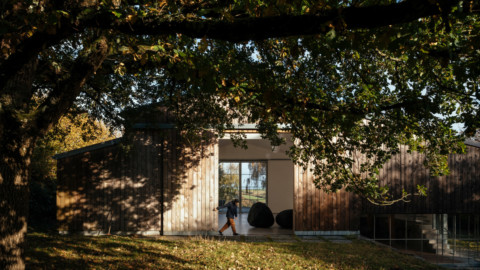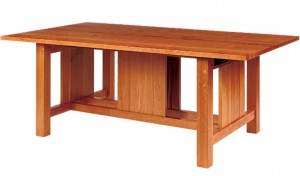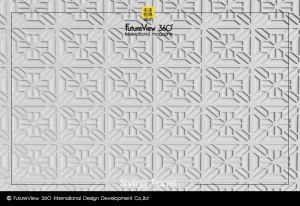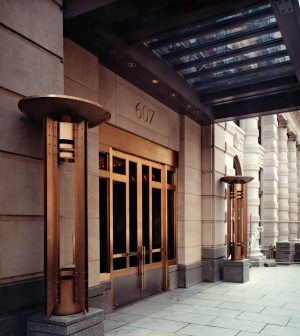Chinese studio Onexn Architects has squeezed Joys cafe into a space less than 2.6 metres wide in a street in Shenzhen, which used to house an air conditioner repair shop.
Narrower than one of the parking spaces outside, Joys serves drinks and pastries from a counter behind an entryway framed by built-in shelves and benches.
中國工作室Onexn Architects已將Joys咖啡廳擠入了深圳一條街道上不到2.6米寬的空間,該空間過去曾是空調維修店的所在地。
喬伊斯(Joys)比外面的一個停車位窄,它在入口通道後面的櫃檯裡提供飲料和糕點,入口通道由內置的架子和長凳所包圍。
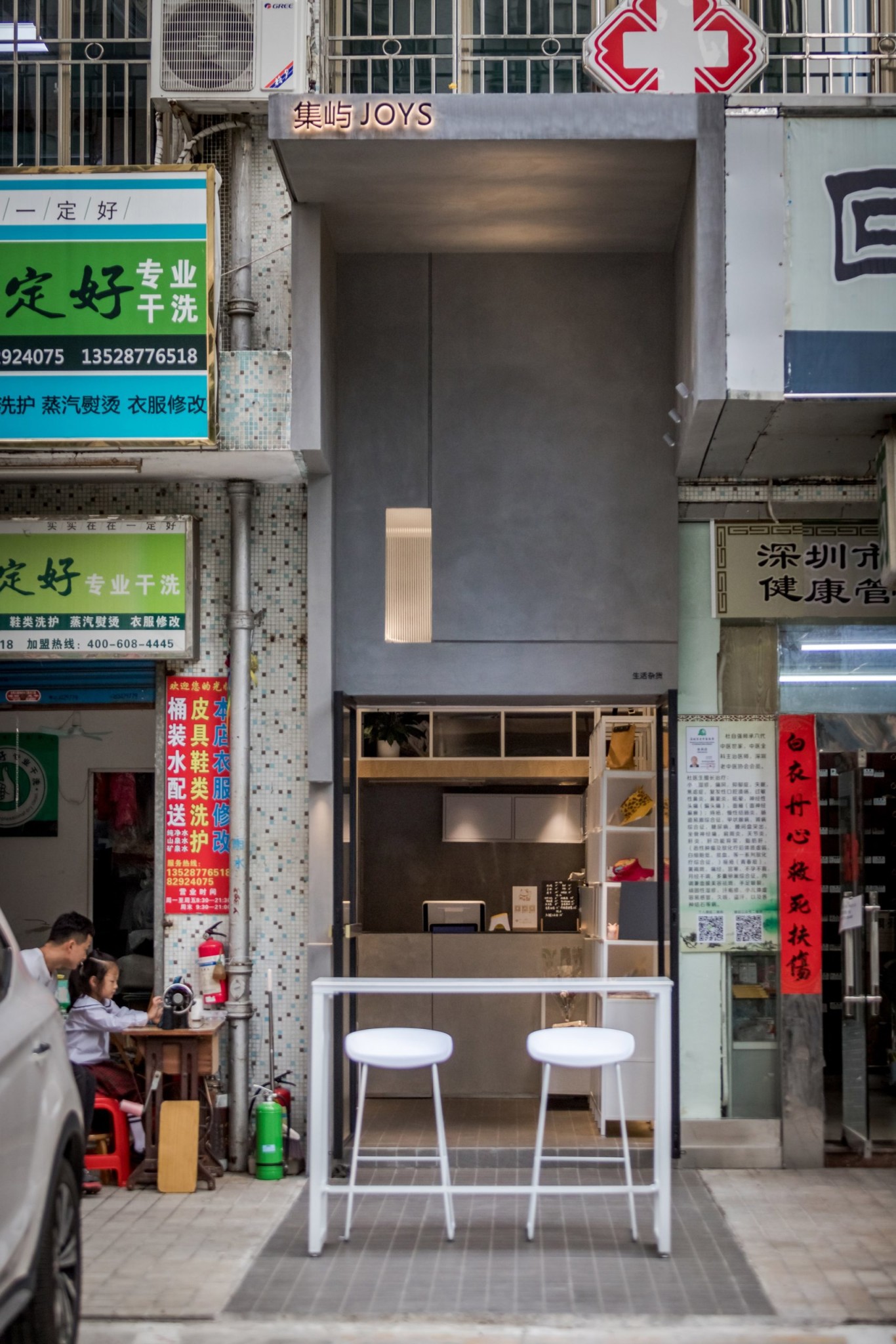
Seating spills out into the street outside. Inside, private office space on a mezzanine floor above the counter is accessible via a retractable ladder.
Despite its small size, Onexn Architects wanted the nine-square-metre cafe to encourage local residents to connect with each other.
座位濺到外面的街道上。 內部,櫃檯上方夾層樓的私人辦公空間可通過伸縮梯進入。
儘管面積很小,但Onexn Architects希望使用9平方米的咖啡館來鼓勵當地居民相互聯繫。
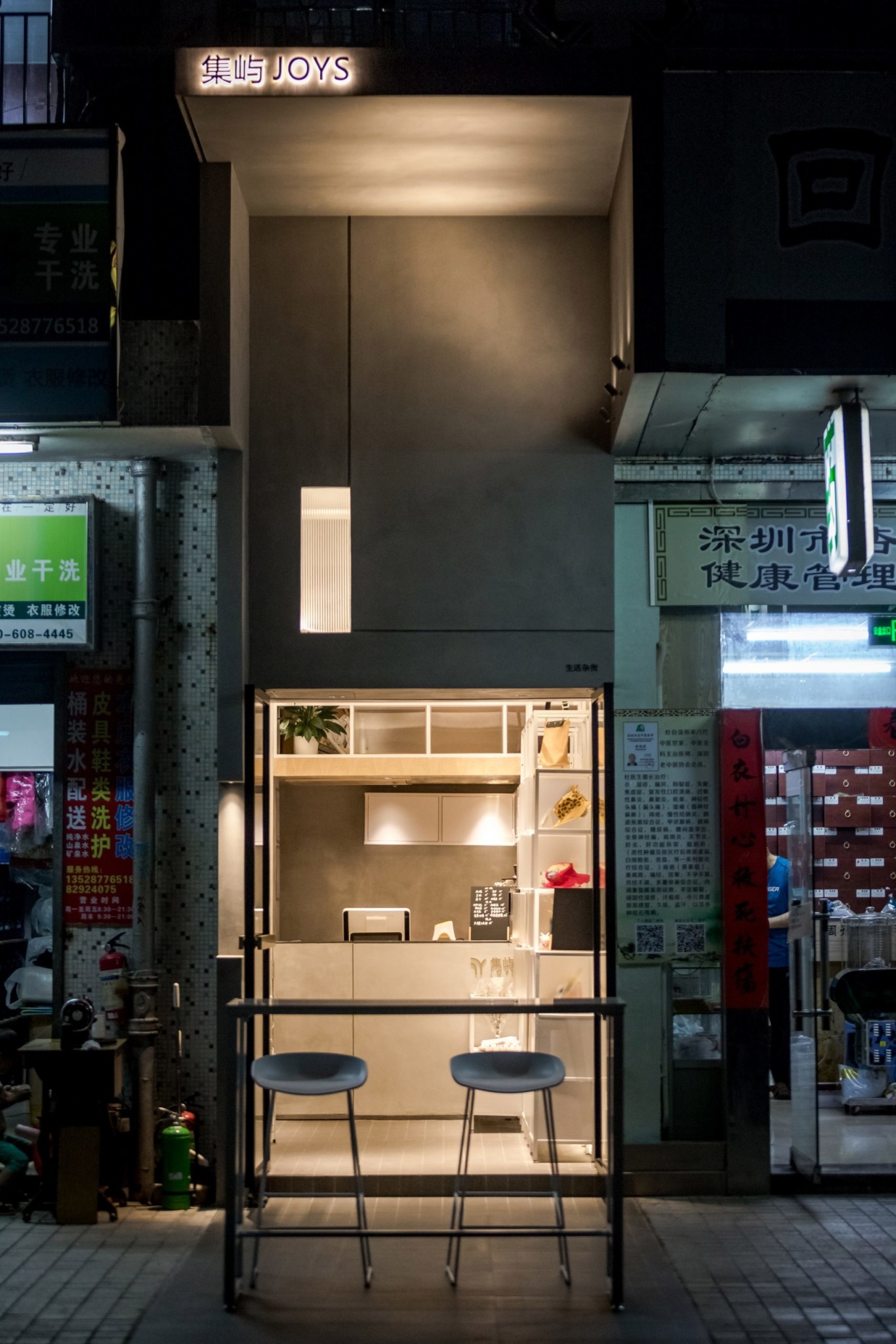
Joys is located in Xiangmi Third Village, a part of Shenzhen that was built in the 1990s. In recent years, the area has lost many of its community facilities, and its green spaces have been turned into high rise developments.
“One of the goals that we shared with our client was to restore a public node on the premise of meeting functional needs,” explained the architecture studio.
“The first time we inspected the site, we found many air-conditioning parts and oil stains were scattered in front of the entrance, so people had to detour to pick up clothes from the laundry or take medicines from the pharmacy next to the repair shop,” added Onexn Architects.
“There was limited space where residents could stay since the site left a mingled, neglected or blurred impression.”
喬伊斯位於1990年建成的深圳香蜜第三村。 近年來,該地區失去了許多社區設施,其綠地已變成高層建築。
“與客戶共享的目標之一是在滿足功能需求的前提下恢復公共節點,”建築工作室解釋說。
“我們第一次檢查現場時,發現許多空調零件和油漬散落在入口的前面,因此人們不得不繞道而行,從洗衣店撿拾衣服或從維修店旁邊的藥房吃藥。 ,” Onexn Architects補充說。
“由於該地點留下了混雜,被忽視或模糊的印象,因此居民可以居住的空間有限。”
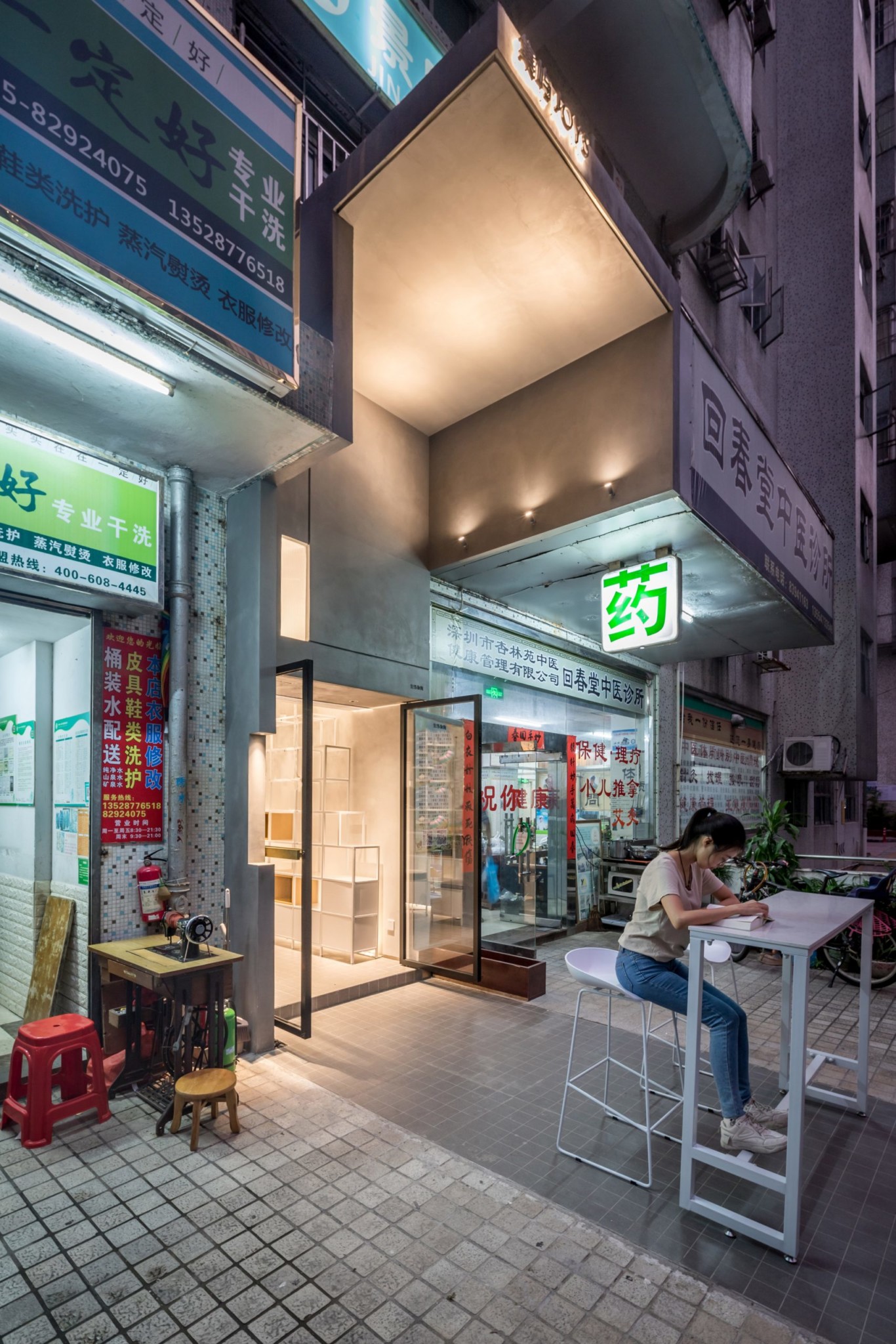
To create a more welcoming entrance, Onexn Architects removed the existing lightbox and created a front with a high porch that shelters the tall glass doors that both swing open.
While the cafe is under 2.6 metres wide, the porch is almost five metres tall, making it almost twice as tall as it is wide.
Spotlights in the porch underneath the cafe sign also light up at night to attract the eye. A narrow slit window above the door lets daylight in during the day and lights up after dark.
On the other side of the door, a ceiling installation that curves towards the apex of the room changes the dimensions of the interior space.
“It mitigates the oppressive feeling in this cramped and high space and brings a sense of mystery and ritual to it as well,” said Onexn Architects.
為了營造出更加溫馨的入口,Onexn Architects拆除了現有的燈箱,並在前部設計了高高的門廊,該門廊可以遮蓋兩扇打開的高大玻璃門。
咖啡館的寬度不到2.6米,而門廊的高度幾乎是5米,幾乎是寬度的兩倍。
咖啡館招牌下的門廊中的聚光燈在晚上也亮起以吸引眼球。 門上方狹窄的狹縫窗戶讓白天進入白天,天黑後照亮。
在門的另一側,朝房間頂點彎曲的天花板安裝會改變內部空間的尺寸。
Onexn Architects表示:“它減輕了在狹窄和高空空間中的壓抑感,並帶來了一種神秘感和儀式感。”
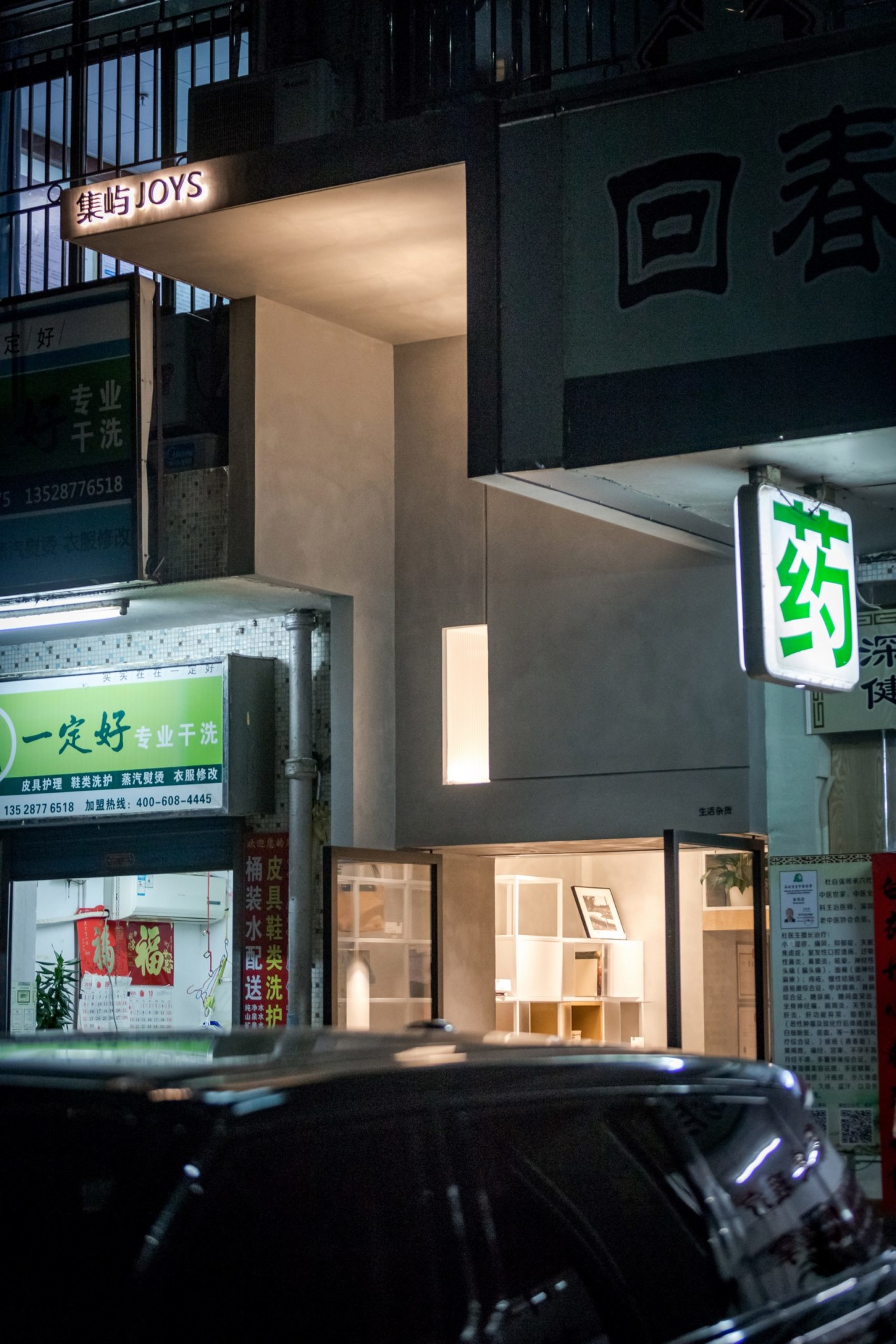
Wooden box shelves are stacked in a grid-like formation either side of the door, continuing up over part of the ceiling. This design is meant to be a space-saving solution that doubles as a decorative installation that adds to the cafe experience.
At the base, boxes topped with cushions protrude from the shelves as bench seats for customers. Cupboard doors below conceal extra storage space.
木箱架子在門的兩側以網格狀形式堆疊,並在天花板的一部分上連續延伸。 這種設計是一種節省空間的解決方案,可以兼作裝飾安裝,從而增加咖啡館的使用體驗。
在底座上,上面放著墊子的盒子從架子上伸出來,作為客戶的長椅。 下方的櫥櫃門隱藏了額外的存儲空間。
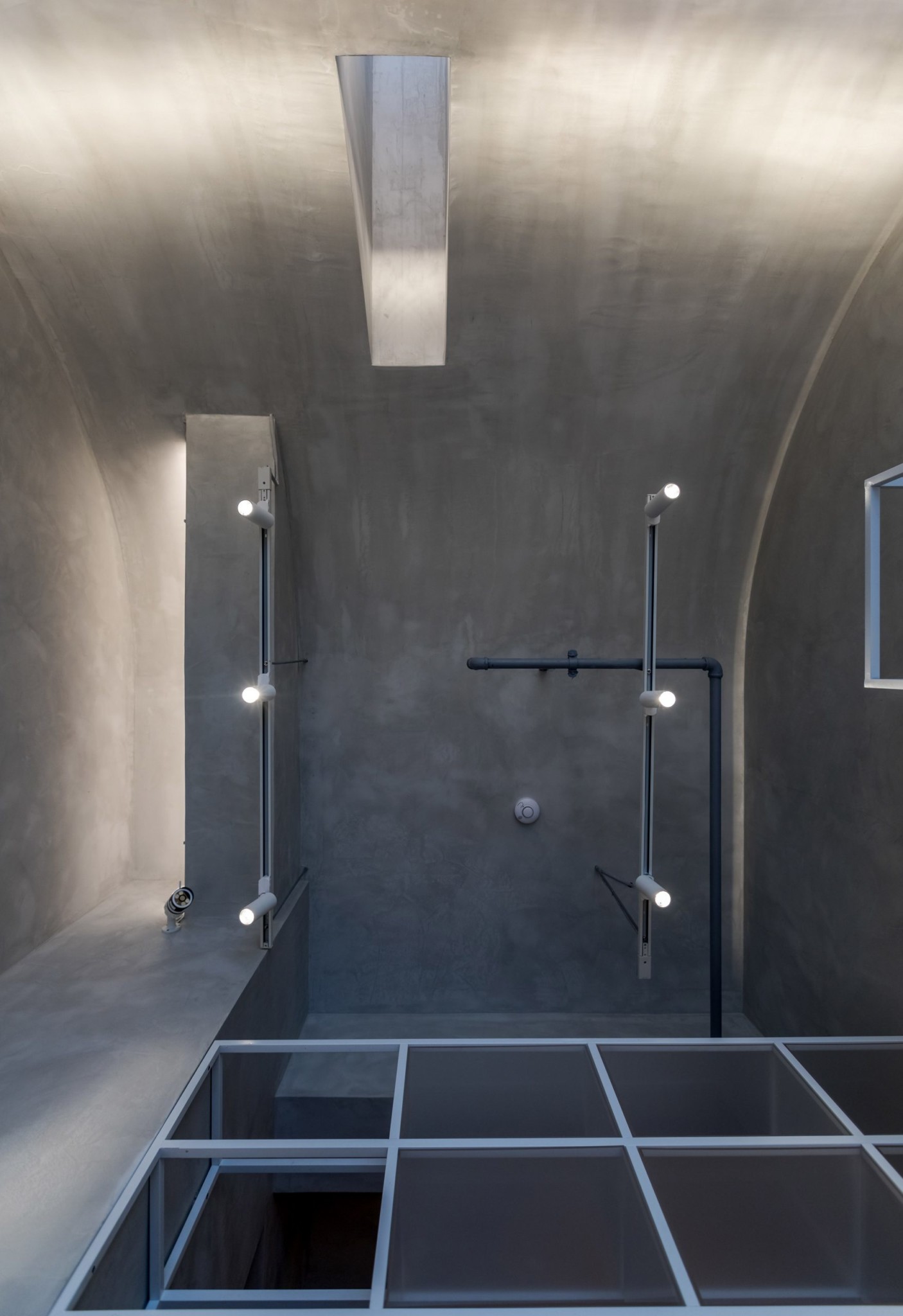
The shelves frame the cafe counter, which faces towards the door. Behind, in the staff area, there are worktops, coffee machines and bakery equipment. The ladder to the office mezzanine floor can be retracted when not in use to save space.
Joys interior and exterior are covered in the same pale grey paint that resembles cement. Dark grey floor tiles continue from the inside of the cafe out over the pavement and end at the curb.
貨架上架著面向櫃檯的咖啡館櫃檯。 在員工區的後面,有工作台,咖啡機和烘焙設備。 不用時,可以縮回辦公室夾層樓的梯子,以節省空間。
Joys的內部和外部都覆蓋有與水泥相似的淺灰色油漆。 深灰色的地板磚從咖啡館內部一直延伸到人行道,一直到路邊。
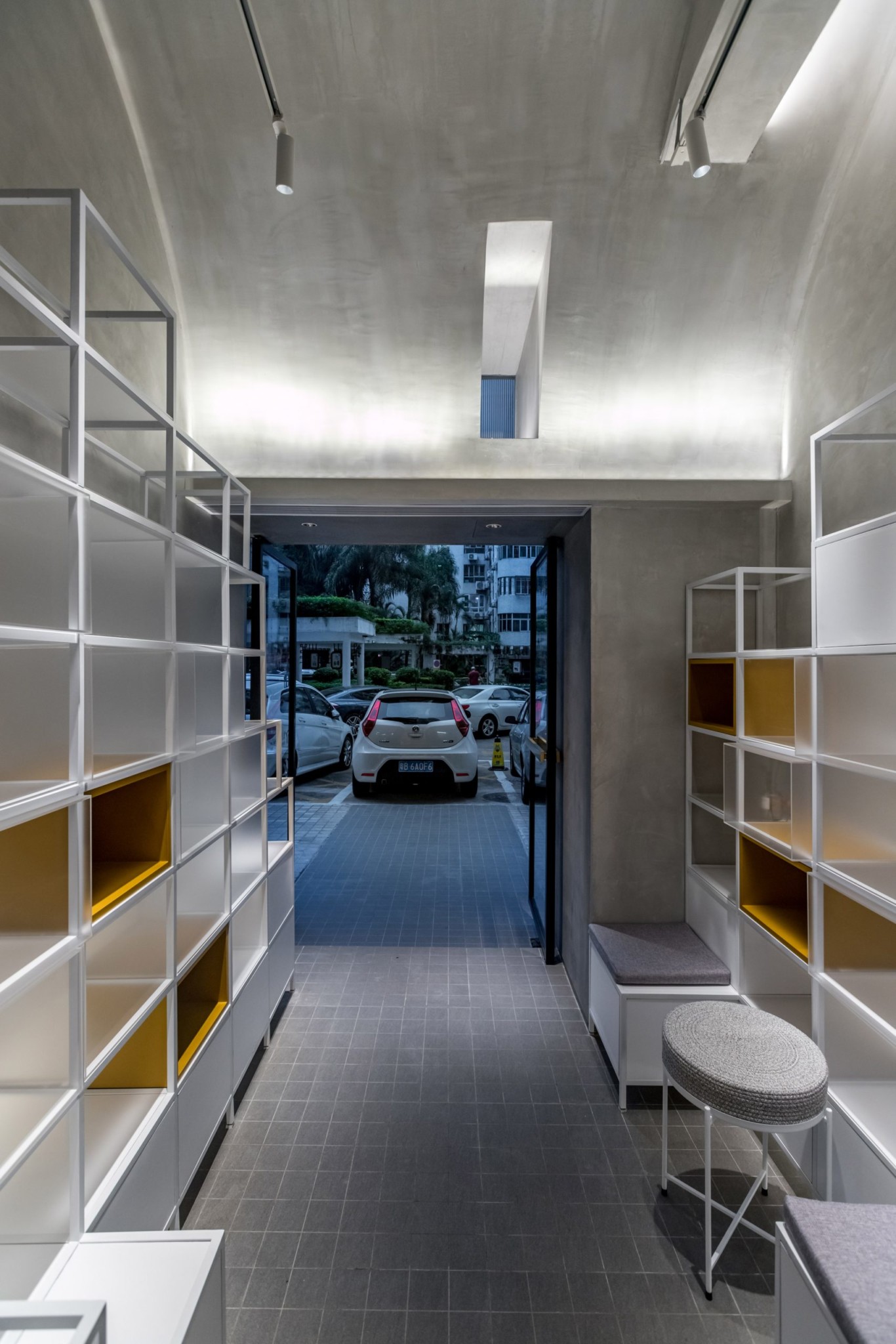
The white shelf and seating system has pops of colour in the form of mustard-yellow inserts. Building in such a tight gap involved negotiating with the shops either side.
“During construction, the warm-hearted neighbours would often offer us advice on design ideas,” said Onexn Architects.
“We resisted initially, but gradually realised that raising opinions and keeping communication in such a symbiotic environment was significant,” added the studio.
“The wall on the right side of the entrance, which we call a spontaneous design, is a cooperative achievement of the neighbours and us.”
白色的擱板和座椅系統具有芥末黃色插入物形式的色澤。 在如此狹小的空間內進行建造需要與雙方的商店進行談判。
Onexn Architects表示:“在施工期間,熱情的鄰居經常會向我們提供有關設計理念的建議。”
該工作室補充說:“我們最初抵制,但逐漸意識到在這樣一種共生的環境中提出意見並保持溝通很重要。”
“入口右側的牆,我們稱之為自發設計,是鄰居和我們共同的成就。”
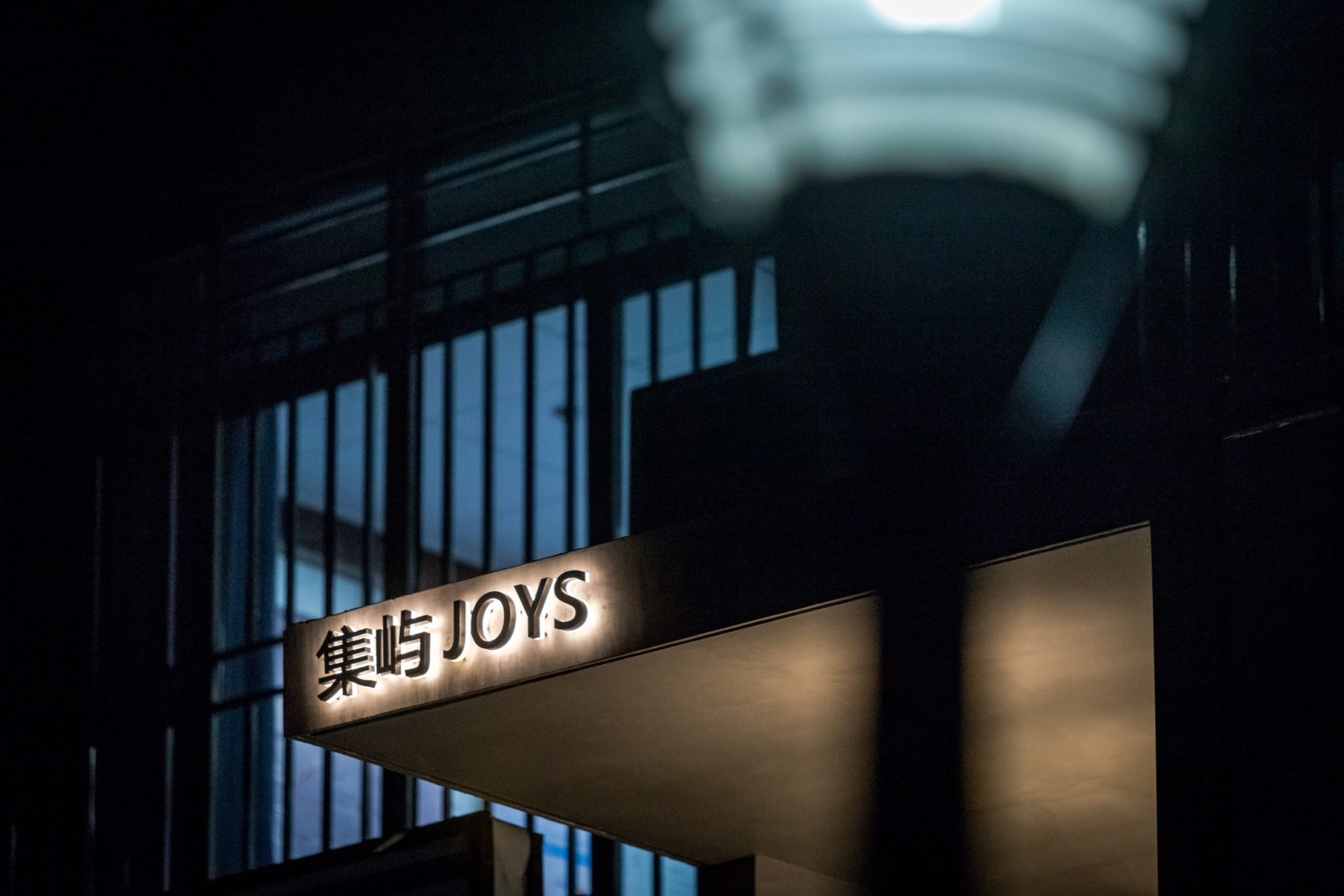
Onexn Architects preserved a low flower bed on one side and the space for a community sewing machine on the other.
Founded by Bo Zhang and Jingjing Wang in 2015, Onexn Architects is based in Shenzhen.
More eateries in small spaces include this cafe and pocket park built in the space left by a building destroyed by an earthquake, and a streamlined coffee bar that features zero furniture.
Photography is by Li Jinhui.
Onexn Architects在一側保留了低矮的花床,在另一側保留了用於社區縫紉機的空間。
Onexn Architects由張波和王晶晶於2015年創立,總部位於深圳。
在狹小空間中,更多的餐館包括在被地震破壞的建築物遺留下來的空間中建造的咖啡館和袖珍公園,以及配備零家具的流線型咖啡吧。
攝影是李金輝。

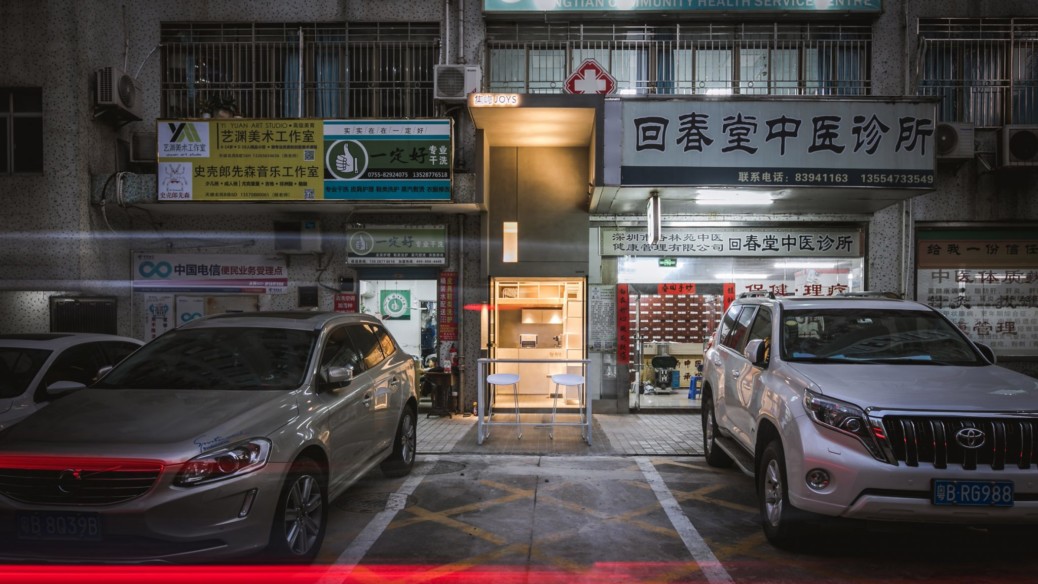
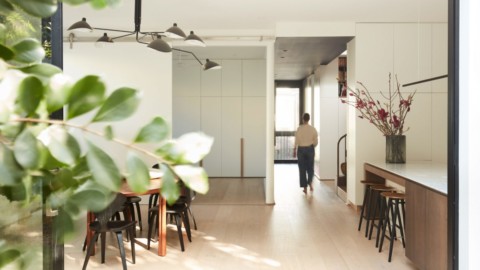
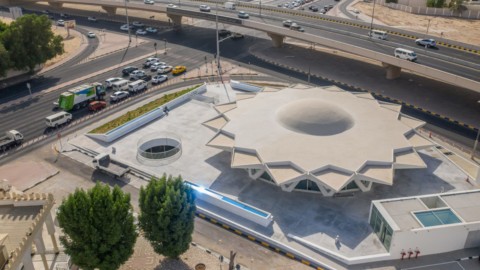


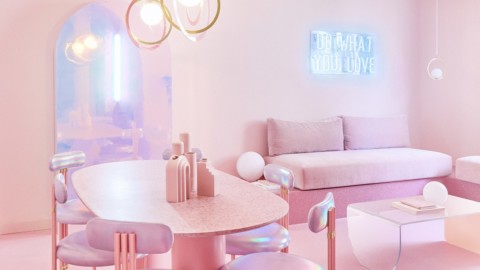
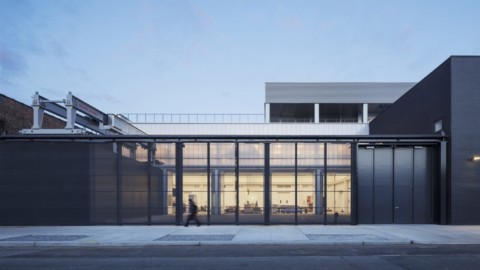
![[June 4th and 30th] Monument, the United States, LA, the creator, do not forget the world 【六四30年】紀念碑美國LA建成 創作者望世人不要遺忘](https://www.futureview360.com/wp-content/uploads/2019/03/1550995847_0b2f-480x270.jpg)
